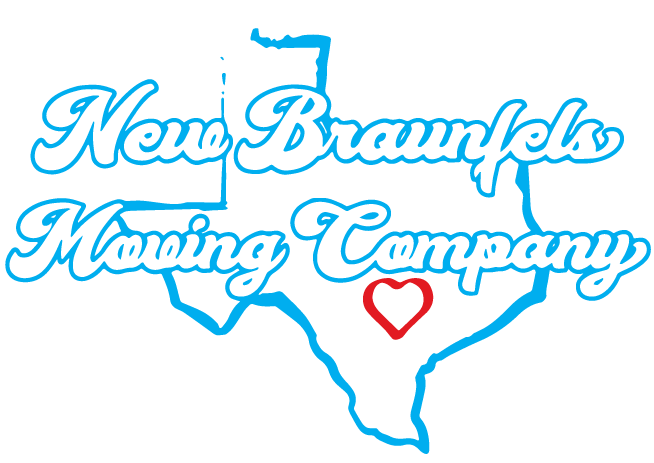Moving to a new home, especially over long distances, can feel like both an exciting adventure and a daunting task. You might find yourself juggling countless details—picking the right moving company, packing your belongings, and figuring out how to transport that quirky old piano that holds so many memories. But don’t worry, you’re not alone in this! Many people have navigated the intricate world of long-distance moving and found solutions that work, making their relocations smoother and less stressful. This article aims to simplify your journey by providing insights into finding the best long-distance movers near you, along with tips for a hassle-free experience. Let’s dive into what you need to know, so you can focus on starting fresh in your new home without all the chaos.
The best long distance movers near you will typically offer transparent pricing, reliable service, and customer support tailored to your moving needs. In New Braunfels, our company is recognized for its experienced team, comprehensive moving services, and commitment to ensuring a stress-free relocation experience for both residential and commercial clients.
Top Long Distance Moving Companies Near Me
When it comes to choosing a long-distance moving company, reputation holds significant weight. Trustworthy companies like Allied Van Lines, North American Van Lines, and Mayflower have built strong names for themselves over the years. Their extensive nationwide networks are tested and proven, ensuring that your belongings reach their destination reliably while providing services tailored to your needs. These movers usually offer full-service relocation, covering everything from packing up your boxes to shipping your car.
Reputable Companies
While the names above might stand out in the crowd, it’s critical to consider their customer service ratings too. Good reviews can speak volumes about how a company treats its clients during what is often a highly stressful time. Families transitioning to new areas or individuals seeking fresh starts value compassionate support as much as the logistics of the move itself.
Beyond reputation, let’s further explore some key features that can guide you in selecting the best mover for your situation.
Key Features to Consider
- Service Range: Ensure they cover cross-country or international moves if required. Some companies specialize only in local moves, and knowing this upfront can save you time.
- Insurance Options: Look for companies offering comprehensive insurance for added peace of mind. Accidents can happen even among seasoned professionals; solid coverage can significantly ease worries.
- Experience: Companies with decades of experience generally offer dependable services. Established procedures for handling various situations can make all the difference when challenges arise.
- Additional Services: Check for packing, storage, and specialty item services. If you have fragile items or require temporary storage solutions, these add-ons can prove invaluable.
Once you’ve narrowed down potential movers based on these factors, it’s essential to compare specific services and quotes they offer. This understanding will better equip you for making an informed decision regarding your upcoming long-distance move.
Comparing Moving Services and Quotes
Not all moving companies operate the same way, which highlights the importance of carefully comparing their offerings. Basic services such as loading, transportation, and unloading are typically standard. However, digging deeper into what each company provides can reveal crucial differences that may suit your unique needs. For example, some movers go beyond the basics by offering disassembly and reassembly of your furniture, saving you time and effort on moving day. You might discover that certain companies provide temporary storage options if your new address isn’t quite ready or handle specialty items, like pianos or antiques, with extra care.
Core Services and Extras
When evaluating moving services, consider these core services and extras:
- Loading and Unloading: Are the crew members trained and insured?
- Packing Services: Do they offer comprehensive packing options to protect fragile items?
- Transportation: What’s the condition of their vehicles? Will your belongings be secure?
- Specialty Services: Can they accommodate specific needs like spa moving or vehicle transport?
Understanding the factors that influence quotes will help you avoid surprises later.
Quotation Factors
To receive an accurate quote, it’s wise to request either an in-person or virtual survey of your possessions. This allows the moving company to assess what you’re working with firsthand. Key factors that typically influence these estimates include:
- Distance: The length of your move plays a significant role in determining cost.
- Volume of Items: How much stuff are you bringing along? The more items you have, the higher the quote might be.
- Labor Requirements: If you need additional assistance beyond just loading and unloading—perhaps packing or special handling—this will also contribute to your overall cost.
- Extra Services: Always inquire about any added costs attached to services such as assembly or storage.
Furthermore, don’t shy away from asking about potential hidden fees that can inflate your quoted price unexpectedly. Transparency is critical; reputable moving companies are usually upfront about their pricing policies.
Comparison Table
| Company | Base Quote | Additional Services | Insurance Options | Estimated Timeframe |
|---|---|---|---|---|
| Allied Van Lines | $4,000 | Packing, Storage | Full Value Coverage | 10-14 Days |
| North American Van Lines | $4,200 | Full-Service Packing | Basic & Full Value | 8-12 Days |
| Mayflower | $4,100 | Vehicle Transport | Full Value Coverage | 11-15 Days |
How a company is reviewed by its previous customers can give you more clarity on its reliability. Exploring customer feedback often reveals insights that quotes alone cannot provide.
Reading and Analyzing Customer Reviews
Customer reviews are like gold mines when it comes to uncovering the true nature of a moving company. They provide real-world insights into a company’s reliability and service quality, making them essential for informed decision-making. When browsing through these reviews, you’re not just reading comments; instead, you’re gathering valuable experiences shared by others who have walked the path you are about to take. This shared knowledge helps differentiate solid companies from those that may leave you disappointed.
Where to Find Reviews
To begin your review hunt, utilize platforms like Google Reviews, Yelp, and the Better Business Bureau (BBB). These sites host databases filled with customer feedback about various moving companies. Look closely for detailed commentary regarding punctuality—were they on time or did they arrive late? Did they handle items with care or were there reports of damage? Additionally, pay attention to how responsive they were to customer queries; promptness in communication often reflects their willingness to address concerns.
However, don’t just skim through the positive reviews looking for only laudable comments; it’s important to consider and analyze potential red flags alongside high marks.
Red Flags and High Marks
As you comb through reviews, keep an eye out for red flags that could indicate problematic behavior. For instance, if multiple reviews mention delays in arrival times or unexpected hidden charges that catch clients off guard, these should raise alarms. It’s equally crucial to watch for mentions of damaged goods or negative interactions with less-than-ideal service. These red flags can be very telling about what you might expect from the company.
Conversely, consistent praise in certain areas can signal a trustworthy company. If you notice several reviews highlighting careful handling of belongings, honesty in quotations, and professional behavior from movers, that’s a strong indication of reliability. Positive remarks about their customer interaction nurture trust, which is invaluable during a potentially stressful process like moving.
Thorough analysis of customer reviews allows you to paint a clearer picture of what to expect from a moving company—both good and bad. Taking the time to read some firsthand experiences can save you hours of unneeded headache later on.
As you explore the landscape of options available to you, understanding both commendations and criticisms will guide you towards making a well-informed choice that fits your needs perfectly.
Efficient Packing and Preparation Tips
Efficient packing begins with a well-thought-out plan, transforming an overwhelming task into something manageable. Imagine standing in your living room, surrounded by boxes, feeling like chaos reigns. By organizing your approach, you can minimize stress and ensure every item finds its appropriate place in the journey ahead.
Packing Strategies
One of the first steps involves sorting through your belongings and decluttering. It’s astonishing how much we accumulate over the years—items we rarely use or have long forgotten about. Take a moment to assess each item’s value. Is it necessary? If not, consider donating or discarding it. This simplifies the packing process while lightening your load for transportation, potentially saving money on moving costs.
Next, use quality supplies. Investing in sturdy boxes, bubble wrap, and packing tape goes a long way toward protecting your items during transport. Think of containers that can handle weight and pressure better than flimsy cardboard ones. You wouldn’t carry glassware in grocery bags—treat your belongings with similar care. Using clearly labeled, high-quality materials shows respect for both your possessions and the movers who will be carrying them.
As you prepare each box for the move, take a moment to label everything. Clear communication simplifies the unpacking process later on, helping not just you but any professional helpers as well. Labeling each box with its contents and intended destination room transforms what could be an exhaustive scavenger hunt into an organized transition to your new space.
Speaking of organization, don’t forget to pack an essentials box! Trust me, after loading up the moving truck, you do not want to be rifling through dozens of boxes searching for basic necessities. The essentials box should contain items like toiletries, a change of clothes, snacks, and anything else you’ll need right away upon arrival at your new home; it’s basically your very own “survival kit” for moving day.
Hiring Professional Packers
Another option worth considering is hiring professional packers offered by many long-distance moving companies. Not only does this save you time and effort, but it also ensures that items are securely packed by people experienced in handling fragile objects like artwork or electronics. This trained team knows the best practices for loading trucks efficiently while maximizing space and minimizing damage risk.
While bringing in professionals may seem like an added expense, weigh it against the potential benefits: fewer headaches and more time to focus on other aspects of your move. Having someone take care of this critical phase can translate into peace of mind as you embark on this new journey without unnecessary strain from packing challenges.
By prioritizing efficient packing strategies and considering professional assistance, you’re setting a solid foundation for a smoother transition into your next chapter. Let’s move forward to examine how effective financial planning can make all the difference during this process.
Budgeting for a Long-Distance Move
Planning a moving budget isn’t merely about adding numbers; it’s about understanding the different components involved in a long-distance move and how they impact your overall expenses. It’s crucial to anticipate potential costs to avoid falling into financial pitfalls. A good way to start is by breaking down expenses into identifiable categories.
Cost Breakdown
When crafting a budget, you should consider several key areas:
- Moving Company Fees: This encompasses the base rate for hiring a moving company, which can vary significantly based on distance and weight of your belongings. Don’t forget labor costs associated with packing and loading. Many clients overlook these hidden fees, so it’s prudent to ask for a detailed quote before committing.
- Insurance: Depending on what you’re transporting, evaluating your insurance needs is essential. Basic coverage may come included, but if you own valuable items or fragile possessions like electronics or artwork, full coverage could save you from significant loss. Understanding this difference will help inform your budget.
- Additional Services: Often overlooked are the services that enhance the moving experience. These include packing assistance that ensures items are securely packed or storage options if there’s a gap between moves. If you’re moving specialty items like spa equipment or art pieces, these services may be necessary and should be factored into your total cost.
- Travel Expenses: As exciting as moving can be, don’t forget the logistics of getting yourself and your family to your new home! Travel costs can pile up quickly with lodging and meals on the road, so plan for this expense by estimating how long the journey will take.
Saving Opportunities
Once you know the potential costs associated with your move, look for ways to save wherever possible. Comparing quotes from several moving companies often reveals opportunities to negotiate lower rates. Some companies might even offer seasonal promotions or discounts during off-peak times when fewer people are relocating; keep an eye out for those!
Also consider DIY solutions whenever feasible—perhaps packing some of your items yourself will lessen labor costs? Simply taking this route can lead to savings that help counter any unforeseen expenses that arise during transition phases.
As you prepare your finances for this transition, understanding how to streamline the entire process can further ease your journey ahead.
Scheduling for a Stress-Free Experience
Proper scheduling can make all the difference when it comes to reducing the stress of a long-distance move. Starting early and planning systematically creates a clear path forward, allowing you to approach this significant life event with confidence. Imagine arriving at your new home as if all the hard work was part of an intricate but well-executed plan that unfolded perfectly.
Create a Timeline
To kickstart your pre-move preparations, creating a timeline should be your first step—a roadmap guiding you through the moving process without any unexpected detours.
Two Months Before – This is when the excitement builds. Book your reliable moving company early to secure your preferred date. If you’re considering New Braunfels Moving Company, rest assured that our transparent pricing and dedicated service will support you every step of the way. During this period, also start decluttering your space. It’s like shedding skin; simplifying your belongings helps lighten the load, both physically and mentally.
One Month Before – With just thirty days remaining, it’s time to pack those non-essential items—think off-season clothes or extra kitchen gadgets. This makes managing daily life easier and prepares your living space for change. Confirm logistics such as parking arrangements or elevator access with your moving company to avoid surprises on moving day.
One Week Before – As the big day approaches, focus on packing essentials—those items you’ll need right away in your new home. Be sure to handle address changes too; it’s often overlooked but crucial for ensuring that bills and critical communications reach you seamlessly afterward. Finally, double-check all details with your movers; clarity is key.
Moving Day – That day has finally arrived! Be present to supervise packing and conduct that final walkthrough of your home. Dark corners often hold forgotten treasures (or crumbs), so ensure every nook is addressed before closing that door for the last time.
Flexibility and Communication
While you may have crafted a perfect schedule, be prepared for contingencies—many factors are beyond our control during a move. Having a flexible yet structured timeline allows room to adapt while maintaining peace of mind. Open communication with your movers is essential; sharing updates on timelines lets everyone align effectively so you can transition smoothly into your next chapter.
By following these detailed steps and tips for scheduling, you’ll foster an environment of poise around your move—transforming what could be chaos into a beautiful experience worth savoring.
For more personalized assistance and expert advice during this transformative time, visit our website.
In seeking the best long-distance movers near you, remember that preparation combined with reliable services can lead to a successful transition into your new life. Make wise choices and enjoy the journey ahead.



